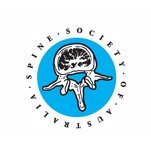Rehabilitation for Low Back Pain
Table of Contents
- Introduction
- Understanding the Neutral Spine Position
- Putting Safe Posture into Practice
- The Rules of Lifting
- The Importance of Exercise
Table of Contents
- Introduction
- Understanding the Neutral Spine Position
- Putting Safe Posture into Practice
- The Rules of Lifting
- The Importance of Exercise
Introduction
Back pain is a serious subject. As you recover from a back injury, it is important that you begin to learn how to safely strengthen your back to help prevent injuries to your back later. Your therapist can teach you specific exercises that will help reduce your back pain now - and help you begin a new set of habits that will help keep your back healthy.
This presentation will help you understand what each part of your rehabilitation program is meant to do. It will also teach you how your back works and how to reduce or prevent further injury while your back heals.
- First, you will learn why it is important for your spine to be properly balanced - in the Neutral Spine Position.
- Then you will see how to use the neutral spine position in everyday activities - such as walking and lifting. Learning to lift properly is so important that a whole section has been devoted to the rules of lifting.
- Finally, you will learn how you can benefit from exercise, after an injury and as protection against further injury.
Understanding the Neutral Spine Position
Management and prevention of back pain begin by understanding the neutral spine position. Three natural curves are present in a healthy spine. The neck, or the cervical spine, curves slightly inward. The mid back, or the thoracic spine, is curved outward. The low back, or the lumbar spine, curves inward again. The neutral alignment is important in helping to cushion the spine from too much stress and strain. Learning how to maintain a neutral spine position also helps you move safely during activities like sitting, walking, and lifting.
The natural curves of the spine are the result of the muscles, ligaments, and tendons that attach to the vertebrae of the spine. Without these supporting structures, the spine would collapse. They support the spine - much like guide wires support the mast of a ship. This guide wire system is made up mainly of the abdominal and back muscles. The abdominal muscles provide support by attaching to the ribs, pelvis, and indirectly to the lumbar spine. The muscles of the back are arranged in layers, with each layer playing an important role in balancing the spine. By using these muscles together, it is possible to change the curves of the spine.
Controlling pelvic tilt is one way to begin helping to balance the spine. As certain muscles of the back and abdomen contract, the pelvis rotates. As the pelvis rotates forward, the lumbar curve increases. As the pelvis rotates backward, the curve of the low back straightens. Rotation of the pelvis is like a wheel centred at the hip joint. The muscles of the upper thighs also attach to the pelvis and contraction of these muscles can be used to change the curve of the spine.
The abdominal muscles work alone, or with the hamstring muscles to produce a backward rotation of the pelvis. This causes the slight inward curve of the low back to straighten. If these muscles cause the curve of the low back to straighten too much, this may produce an unhealthy slouching posture.
In the other direction, as the hip flexors contract and back extensors contract, the pelvis is rotated forward - increasing the curvature of the lower back. If this curve is increased too much, another unhealthy posture may result. This condition is called lordosis in medical terminology, or swayback in common terms.
A balance of strength and flexibility is the key to maintaining the neutral spine position. This balance is the basis for optimal muscle function. Like a car, an imbalance may lead to wear and tear, eventually damaging the various parts of the car.
Muscle imbalances that affect the spine have many causes. One common cause of muscle imbalance is weak abdominal muscles. As the abdominal muscles sag, the hip flexors become tight, causing an increase in the curve of the low back. This leads to the swayback posture mentioned above. Another common problem results from tight hamstrings. As the hamstring muscles become tight, the pelvis is rotated backwards. This produces an abnormal slouching posture.
Putting Safe Posture into Practice
Understanding body mechanics means understanding how we use our body. Proper body mechanics result when we put the neutral spine posture into action. To use proper body mechanics, we need to learn how the spine should work during activities like: rising from a chair, walking, and lifting.
Sitting
Healthy sitting posture is based on the neutral spine position. Positioning your hips and knees at 90 degrees can help you keep a neutral sitting posture. Remember this position is balanced between the extremes of lumbar movement. Remember to choose a properly designed chair to help support the lumbar spine. The neutral spine position is also important when getting up from a chair. Holding the spine safely in neutral, the pelvic wheel turns forward, placing the "nose over the toes". With the feet placed shoulder width apart, stand upright. Use the buttock and thigh muscles to push yourself up. Do not twist or bend too far over at the waist and put too much strain on the lumbar spine.
Walking
Proper body mechanics are also important while walking - try to maintain the neutral spine position while walking. In the neutral position, the legs and arms swing naturally during forward motion. Conditions that alter the normal way of walking, and cause a limp, can severely stress the spine. While walking, always try to maintain your spine in the neutral position.
Lifting
Lifting is one of the most dangerous activities for the spine. The neutral position MUST be used to reduce the risk of injury. With the spine held in the neutral position, the movement occurs as the pelvic wheel turns. The hip is the axis of pelvic rotation - not the back! Notice how the back loses the neutral position when the pelvis does not rotate forward. This posture focuses the force on the back muscles during a lift. Lifting in a neutral position allows the larger and more powerful leg muscles to do the lifting.
When lifting - first find the neutral position. Bend at the hips by rotating the pelvic wheel at the hip joint axis. Keep the safe posture, hold the object securely, and use the large leg muscles to generate power. Tighten the abdominal muscles during the lift to create a stabilizing corset around the trunk.
The Rules of Lifting
Many back injuries occur during lifting. Making a complete checklist for safe lifting can reduce the risks of injury.
- First, plan and prepare for the lift. It only takes a moment to insure safety. The consequences of a back injury can be long lasting!
- Insure a safe and clear path.
- Before beginning, think through the lift.
- Obtain good footing with a wide base of support, by placing the feet a minimum of shoulder width apart. This lowers the centre of gravity and increases stability.
- Keep the load close! Keeping the load close to the body can reduce stress on the spine and back muscles. Think of how a lever and fulcrum works. The back muscles, the spine, and the arms are the parts that form this lever system. The force needed to lift an object is lower if the load is nearer the fulcrum point. If the load is too far away from the body, the muscles of the spine must work harder to help with the lift. This leads to too much stress on the muscles of the spine, and can cause injury.
- Maintain the neutral spine position! By moving the pelvic wheel around its axis, the upper body hinges forward, but the spine stays in neutral. Remember the neutral spine position at all times!
- Remember to lift with the large muscles of the legs!
- Avoid twisting AND bending of the lower back at the same time! This is one the most damaging movements to the spine. To avoid twisting, pivot the feet to complete the lift.
- Get help if necessary! If the load is too bulky or heavy, do not hesitate to get help or use a hand truck! Do not be too tough or too busy to get help. Will power does not take the place of a reasonably safe lift.
The Importance of Exercise
Exercise is beneficial during all stages of recovery from a back injury.
Different types of exercises will be used by your physical therapist as you progress. In the early stages, when your back is still quite painful, specific exercises to reduce your pain may be suggested. These exercises are helpful in easing pain through relaxation. Positioning exercises place the spine at rest. These exercises can give relief to sore muscles and joints.
Back pain can be physically and emotionally draining. Relaxation exercises may not correct your problem, but they can help control pain and its accompanying stress. Movement is also important, even when the back is still painful. Careful movements suggested by your therapist can safely ease pain by providing nutrition and lubrication to injured areas. Movement of joints and muscles also signals the nervous system to block incoming pain.
As your back becomes less painful, the exercises will be changed to focus on improving the overall health of your back. These changes will focus on:
- Flexibility
- Strength
- Posture
- Coordination
- Aerobic Conditioning
Flexibility
Exercises that increase flexibility reduce pain, making it easier to keep the spine in the neutral position. Tight muscles cause imbalances in spinal movements. This can make injury of these structures more likely. Flexibility exercises for the trunk and lower limbs are helpful in establishing safe movement. A slow progression of stretching exercises can increase flexibility in these structures and reduce the chance of re-injury.
Strength
The next stage of exercise focuses on the strength of the muscles that support the spine. These muscles help bring the spine into the neutral position and keep it there. Trained abdominal, back, and hip muscles assist in forming a natural corset. Strength training is simple to do at home and does not require any expensive equipment.
Posture
Posture exercises help train movement between the pelvis and low back.
Learning how to find and hold the neutral position of the spine is the basis for safe and healthy posture. Remember that the position of the pelvis determines the curve in the low back. Forward rotation increases the curve.
Backward rotation straightens the curve. By practicing these exercises, you will become comfortable using the neutral spine position in daily activities.
Coordination
Strong muscles need to be coordinated. As the strength of the spinal muscles increases, it becomes important to train those muscles to work together.
Learning any physical activity takes practice. Muscles must be trained so that the physical activity is under control. Muscles trained to control safe movement of the spine reduce the chance of injury. You will be taught exercises that will help you train your back muscles to work together to protect the spine.
Aerobic Conditioning
Finally, attention will be directed to increasing your overall fitness. The word "aerobic" means "with oxygen". By using oxygen as they work, muscles are better able to move continuously, rather than in spurts. Fitness training allows the muscles to become more efficient at obtaining nutrients and oxygen from the blood. As the muscles use up the nutrients and oxygen, chemical waste products are created that cause pain. Training also increases the muscles ability to get rid of these waste products.
Exercise has other benefits as well. Exercise causes chemicals called endorphins to be released into the blood. These chemical hormones act as natural pain relievers. It will be important for you to pick an aerobic activity that you enjoy and stick with it!













